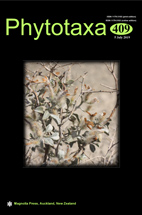Abstract
Dovyalis revoluta, almost since described included in D. zeyheri, is reinstated. This restricted-range endemic from South Africa is compared with other southern African members of the genus, in particular D. zeyheri. Illustrations, photographs, a distribution map and a revised description are provided. Also included is an updated key to the seven currently accepted members of Dovyalis in the Flora of southern Africa region. Dovyalis revoluta belongs to Dovyalis sect. Dovyalis, and has only been recorded from a small area in the province of KwaZulu-Natal near the town of Hluhluwe. Most plants are known from the False Bay Park section of the Isimangaliso Wetland Park, a World Heritage Site. Dovyalis revoluta is clearly distinguished from other southern African members of the genus by having relatively large (ca. 22–25 mm in diam.), subglobose, orange fruit, with the surface minutely and densely papillate and the calyx lobes (tepals) tightly revolute, but not accrescent, after flowering. Furthermore, the vegetative parts are essentially glabrous and the leaves are usually entire and not distinctly three-veined from the base. Domatia are absent. A preliminary population assessment, including an estimate of the sex ratio, was conducted at False Bay Park. Based on IUCN Red List categories and criteria, a conservation assessment of “Critically Endangered” is recommended for this species.

